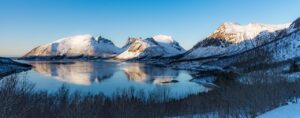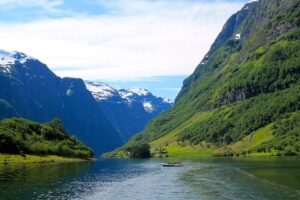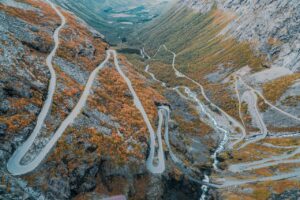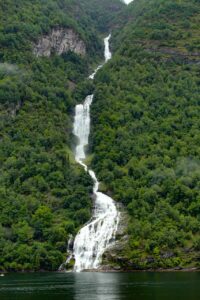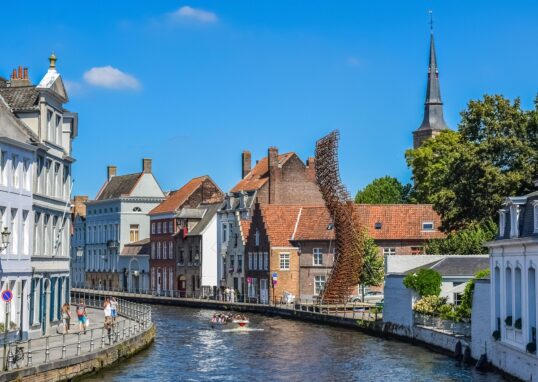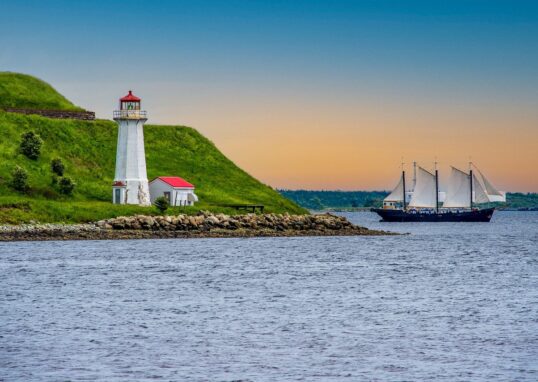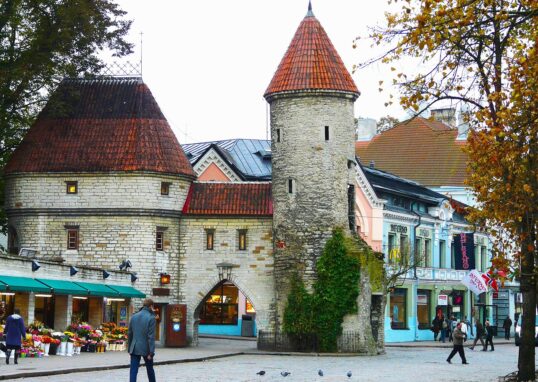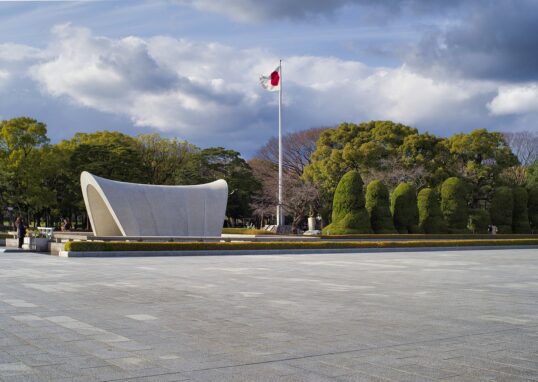
The Edge of the World Lives Here: Norway’s Fjords and Their Heart-Stopping Grandeur
The Norwegian Fjords, a breathtaking natural wonder, are one of the most stunning landscapes in the world. The profound, glacially carved valleys with seawater stretching along Norway’s west coast form spectacular scenery that amazes tourists worldwide. A UNESCO World Heritage Site, Norway’s Fjords provide a unique combination of unspoiled nature, culture, and outdoor pursuits, ranking among the top-rated destinations in Scandinavia. The guide will include history, geological significance, important fjords, surrounding attractions, outdoor pursuits, recommended visit times, and helpful travel tips for visiting Norway’s fjord region.
The Formation and Geological Significance of the Norwegian Fjords
Glaciers formed the Norwegian Fjords for thousands of years. Massive glaciers formed deep valleys in the landscape during the Ice Age. Upon melting ice, the valleys filled with seawater, and therefore, the fjords were created in their present form. The natural scenery is typically characterized by cliffs, cascading waterfalls, lush greenery, and deep, clear waters, creating an unmatched visual attraction.
The fjords vary in size and depth, with some extending more than 1,300 meters (4,265 feet) in depth and far back into the land. The unique environment within the fjords protects a rich and varied marine life, including fish, seabirds, seals, and even orcas and whales.
The Norwegian Fjords, an inspiring collection of glacially carved waterways, are some of Earth’s most spectacular natural features. Located in western Norway, they boast towering cliffs, vertiginous waterfalls, and picturesque villages that make them a travel heaven for nature lovers, adventure seekers, and culture junkies alike. This guide highlights the key locations and areas that make the Norwegian Fjords a trip to remember.
Major Attractions in Norwegian Fjords
Geirangerfjord
Geirangerfjord is a UNESCO World Heritage Site and one of Norway’s most famous and photographed locations. It is about 15 km long and features clean stones, emerald-green water, and magnificent waterfalls.
Key Attractions:
- The Seven Sisters Waterfall: A fantastic seven-stream waterfall cascading under a steep rock face.
- The Suitor Waterfall: This is allegedly “courting” them directly across from the Seven Sisters.
- Flydalsjuvet Viewpoint: Panoramic view of mountains and fjord.
- Geiranger Skywalk at Dalsnibba: Situated at an elevation of 1,500 meters, the viewpoint offers breathtaking views of the fjord below.
Nærøyfjord
Overview:
The other UNESCO World Heritage-listed fjord, Nærøyfjord, is the narrowest in Norway, measuring 250 meters at its narrowest point.
Key Attractions:
- Gudvangen Village: An Attractive village at the mouth of the Fjord, offering Viking historical experiences.
- Stegastein Viewpoint: A stunning vantage point that juts out over Aurlandsfjord, with a breathtaking panorama.
- Boat Cruises: Perhaps the most exhilarating way to experience Nærøyfjord’s raw splendor is on a fjord boat cruise from Flam.
Sognefjord (The King of the Fjords)
Overview:
Sognefjord is Norway’s longest and deepest fjord, measuring 204 km in length and exceeding 1,300 meters in depth.
Key Attractions:
- Flåm Railway: One of the most breathtaking areas in the world offers sightseeing trains, stunning mountains, cascading waterfalls, and picturesque valleys.
- Undredal Village: Famous for its ancient Norwegian goat cheese and scenes.
- Jostedalsbreen Glacier: Europe’s largest glacier, hosting guided treks and ice climbing.
Hardangerfjord
Overview:
The “Orchard of Norway” is the popular name for Hardangerfjord, renowned for its fruit orchards, particularly during the spring blossom season.
Key Attractions:
- Trolltunga is Norway’s most famous hike, with views from a rock outcrop 700 meters above the fjord.
- Vøringsfossen Waterfall: One of the most well-known waterfalls in Norway, with a drop of 182 meters.
- Hardangervidda National Park: A large plateau for hiking, fishing, and wildlife sighting.
Lysefjord
Overview:
In South-West Norway, some of the most well-known natural monuments in Norway, such as the Pulpit Rock in Lysefjord, are located.
Key Attractions:
- Preikestolen (Pulpit Rock): One of the most famous rock projections with a 604-meter drop, offering magnificent views.
- Kjeragbolten: A boulder wedged between two peaks, a photographer’s delight with death wishes.
- Lysebotn: Small fjord-end village, accessible through the thrill-junkie Lysevegen Road with 27 hairpins.
Surrounding Places Worth Visiting
Bergen – The Gateway to the Fjords
Bergen is typically the first stop on a fjord cruise. The city is rich in history, culture, and stunning scenery.
Key Attractions:
- Bryggen Wharf: UNESCO’s World Heritage Site in Multicolored wooden houses and old trade districts.
- Fløibanen Funicular: Alpine Rides Mount Fløyen for panoramic views of Bergen and Fosser’s nearby.
- Fish Market: Fresh fish, traditional Norwegian cuisine, and souvenirs are available for purchase at the market.
Ålesund – The Art Nouveau City
Ålesund is known for its picturesque architecture and stunning natural surroundings.
Key Attractions:
- Aksla Viewpoint: A Panoramic viewpoint with lovely town views and neighboring fjords.
- Atlantic Sea Park: Northern Europe’s biggest saltwater aquarium.
- Jugendstilsenteret: Museum that displays Ålesund’s unique Art Nouveau architecture.
Stavanger – Coastal Beauty and Fjord Adventures
Stavanger is a coastal town with pretty beaches, a bustling harbor, and convenient access to Lysefjord.
Key Attractions:
- Old Stavanger: A restored wooden house area.
- Norwegian Petroleum Museum: Exhibiting Norway’s petroleum sector and its economic contribution.
- Sola Beach: A Remote beach ideal for surfing and sunbathing.
Lofoten Islands – Arctic Beauty
Although not fjords, the Lofoten Islands are filled with breathtaking scenery, including steep mountain summits, sandy beaches, and tiny fishing hamlets.
Key Attractions:
- Reine: Postcard- Pili Village with Grand Fozard View.
- Haukland Beach: A Sandy Beach with water, ideal for photo opportunities and sunlight.
- Lofotr Viking Museum: The Residence of a Rebuilt Viking Chieftain who Emphasizes Viking Culture.
Jotunheimen National Park – The Land of Giants
Jotunheimen National Park boasts Norway’s highest peaks and some of the country’s best trekking routes.
Key Attractions:
- Besseggen Ridge: Norway’s premier attraction, with stunning views of lakes and mountains.
- Galdhøpiggen: Norway’s highest mountain, led by Glacier Walk.
- Glittertind: A favorite summit, offering superb alpine views.
Norwegian fjords offer a lifetime of experiences, featuring stunning landscapes, rich history, and a range of activity-packed outdoor adventures. From navigating the fjord in the Geirangerfjord to hiking to Royal Trolltunga or cruising the serene waters of Nærøyfjord, there’s an adventure for every adventurer. Norway’s fjords offer ample exploration and fantastic scenery, ranging from cities near Bergen, Andøya, Stavanger, and Jotunheimen National Park.
Fjords of Norway, Surrounding Attractions and Villages
Flåm and the Flåm Railway
Flåm is a small village situated at the head of Aurlandsfjord, a branch of Sognefjord. It’s famous for the Flåm Railway, one of the steepest train rides in the world, offering sensational views over waterfalls and mountains.
Bergen
Also known as the “Gateway to the Fjords,” Bergen is a vibrant coastal town with painted wooden houses, an old pier (Bryggen), and easy access to fjord cruises. The city’s vibrant life, seafood markets, and cultural attractions make it a perfect starting point for exploring the fjords.
Ålesund
Renowned for its Art Nouveau architecture and stunning coastal scenery, Ålesund offers easy access to both Geirangerfjord and Hjørundfjord. It’s also a great place to get panoramic views from Mount Aksla.
Stavanger
A lively city near Lysefjord, Stavanger is famous for its well-preserved old town, sandy beaches, and as the starting point for hikes to Preikestolen.
Jotunheimen National Park
For thrill-seekers, Jotunheimen offers some of Norway’s best hiking and mountaineering experiences, including paths to glaciers, Alpine lakes, and Norway’s highest peaks.
Outdoor Activities in the Norwegian Fjords
Hiking and Trekking
- Preikestolen (Pulpit Rock) – 4-hour increase with a sewing scene on a rock.
- Trolltunga – challenging hikes that reward tourists with a symbolic rock formation hanging over the fjord.
- Romsdalseggen Ridge – a ground growth with impressive fjord and mountain scenes.
Fjord Cruises and Kayaking
- To get close views of waterfalls and wildlife, consider taking a boat ride in Geirangerfjord or Nærøyfjord.
- Kayaking on the calm water in Sogfjord for a peaceful experience.
Wildlife Watching
- Witness Orcas, Humpback Whales, and seals in Fazords.
- Birdwatchers can visit Runde Island near Ålesund, which is home to puffins and other seabirds.
Glacier Excursions
- Explore Nigardsbreen, the soft arm of the Jostedalsbreen Glacier.
- Hike on ice on Folgefonna Glacier.
Cycling and Scenic Drives
- Cycle Rallarvegen, a tourist road with spectacular fjord and mountain views.
- Atlantic Road offers stunning seaview driving, rocky shores, and a great coastal road.
Best Time to Visit the Norwegian Fjords
Summer (June to August)
- Hunting outdoors, boating, and optimal visiting times.
- Long days provide an opportunity for extended exploration.
Spring (April to May)
- Orchards are in bloom, and lighter tourist crowds.
- Waterfalls are at their peak due to melting snow.
Autumn (September to October)
- Lovely autumn leaves enhance the beauty of the fjords.
- Fewer tourists compared to summer.
Winter (November to March)
- The optimal time to witness the Northern Lights in the fjord region.
- Smaller tourists and a snowy atmosphere with angel history.
Travel Tips for Exploring the Norwegian Fjords
How to Get There
- Main airports: Bergen, Oslo, and Stavanger.
- Train: Bargon Railway and Flame Railways claim beautiful routes.
- Ferry: Coastal Ghats and Hartigruton Cruises give fjord access.
Where to Stay
- Hotels and cabins in Bergen, Flame, and Andøya.
- Fjordside cabin for a first-hand experience.
- Camps for nature lovers and scenic spots.
Local Cuisine
- Fresh seafood such as salmon and cod.
- Experience traditional Norwegian dishes, such as shrimp (fermented fish) and lamb casserole (also known as lamb’s head or sheep’s cabbage).
- Enjoy a glass of hard cider.
Packing Essentials
- Waterproof, sturdy trekking boots.
- Apparel for changing temperatures.
- A camera to take great pictures.
Kayaking and boat tours offer a unique perspective of the fjords, allowing visitors to get close to waterfalls and observe wildlife in the region. In the winter, the scenery is transformed into a winter wonderland of skiing, snowshoeing, and dog sledding. Fjords are as rich in natural beauty as in human experience. Representative Norwegian settlements, such as Undredal and Aurland, offer an insight into the traditional way of life, with their stave churches, goat farms, and handmade cheese. The Norwegian Glacier Museum in Fjordland provides insight into the history of the glaciers in the region and their impact on climate change.
Conclusion
The Norwegian Fjords offer the perfect blend of nature, adventure, and culture. The fjord region of Norway is ideal for a range of exciting outdoor activities, as well as charming villages that quietly hide. Sometimes, there is something for the changing landscape, from stones that originate from the water, like glass, which appeals to both lovers and adventurers. Norway is one of the most attractive destinations for travelers, and many find a reason to stay longer due to its breathtaking natural beauty. The journey to the Norwegian Fjords is an unforgettable journey to one of the world’s most influential natural wonders.
